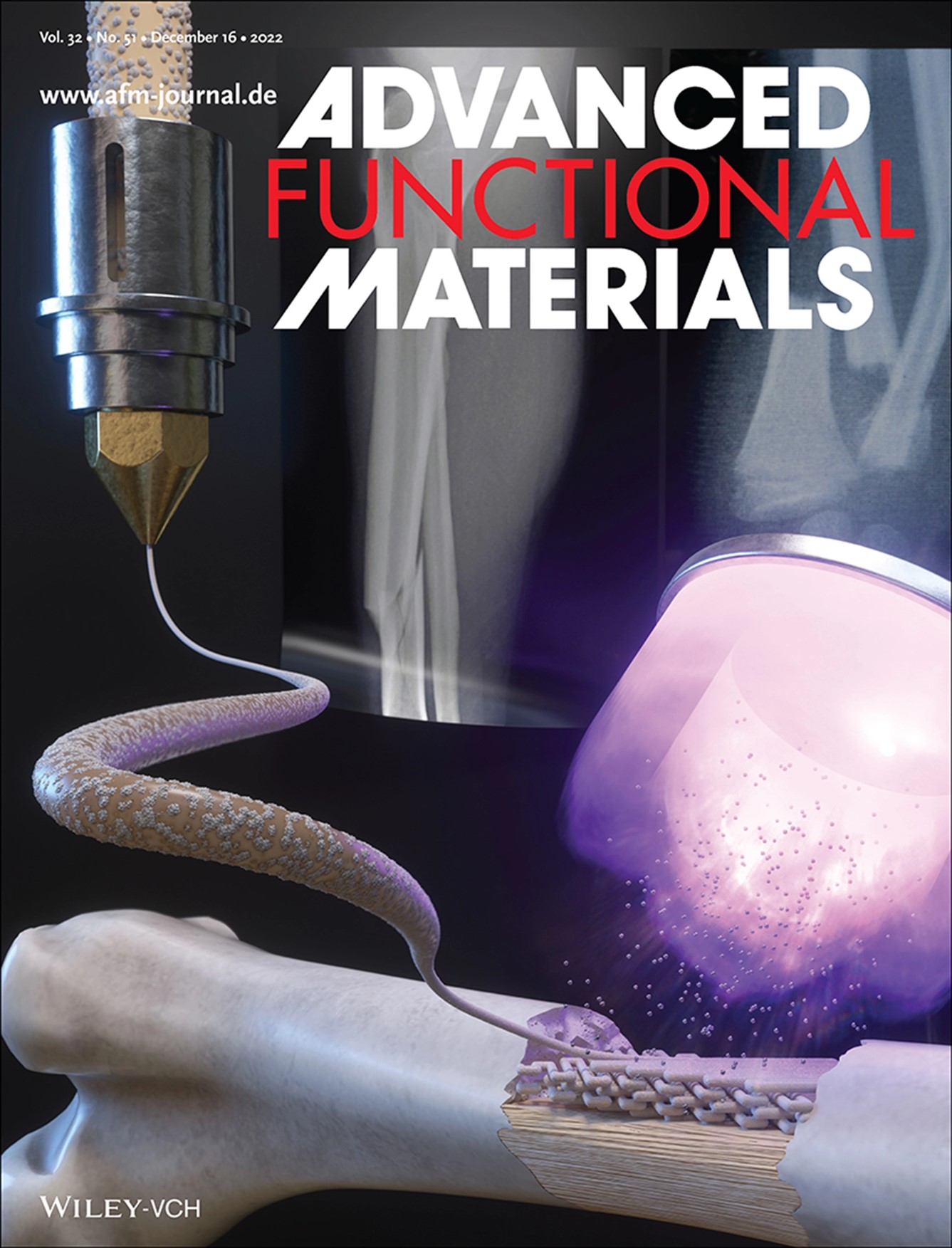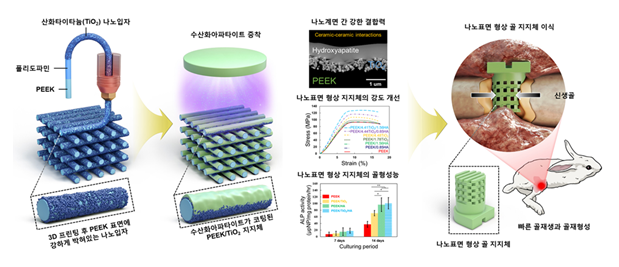-
Professor Jeong Hyun-do’s Joint Research Team of the Catholic University of Korea Develops Nano 3D Printing Technology fAuthor : 관리자Date : 2022.12.20Hit : 507
-

- Securing osseointegrative and high-strength properties through nanosurface-structure 3D-printing technology, Expecting the commercialization as a next-generation multi-functional 3D-printed biomaterial
- Selected as the back cover article of “Advanced Functional Materials,” a globally renowned academic journal in the field of material science
A joint research team at the Catholic University of Korea (President Won Jongchul) developed a technology that achieves both mechanical properties and biocompatibility with 3D-printed biomaterials for bone and cartilage tissue regeneration. The results of this research by a joint research team consisting of Professor Jeong Hyun-do of the Department of Biomedical-chemical Engineering of the Catholic University of Korea, Professor Jang Tae-sik of the Department of Material Science and Engineering of Chosun University, and Researchers Kim Sang-hoon and Park Seong-je of KAMIC of Korea Institute of Industrial Technology (KITECH) were selected as the back cover article for the December issue of Advanced Functional Materials (IF: 19.924).
Until now, super engineering plastic called polyether ether ketone (PEEK) was mainly used as the material of artificial joints. Having similar physical properties to the bone, PEEK has the advantage of preventing the stress shielding effect, but it has poor compatibility with bone tissue, so the surface had to be coated with biomaterials such as titanium to improve adhesion to bone tissue. In particular, there is a disadvantage in that side effects, such as inflammation, occur due to the peeling of the surface due to the low coherence between PEEK and the coated biomaterial.
In response, the joint research team led by Professor Jeong Hyun-do started to develop nanosurface-structure 3D-printed material that achieves both osseointegrative and high-strength properties to make up for the disadvantages of artificial joint materials. First, mussel-inspired dopamine was used to bond titanium dioxide (TiO2) nanoparticles to PEEK filaments, and then it was extruded and fused for 3D printing. The nanoparticles that passed the narrow nozzle came out on the surface of PEEK as solid embossed material, and the supporting structure of the embossed material was coated with hydroxyapatite. As a result, it was found that both the mechanical strength and biocompatibility of the nanosurface supporting structure have been enhanced at the same time.

* Photo description: (From left) Professor Jeong Hyun-do of the Department of Biomedical-Chemical Engineering of the Catholic University of Korea, Professor Jang Tae-sik of the Department of Material Science and Engineering of Chosun University, and Researchers Kim Sang-hoon and Park Seong-je of KAMIC of Korea Institute of KITECH
The joint research team led by Professor Jeong Hyun-do plans to conduct follow-up research as the team considers that the newly developed nanosurface-structure 3D printing technology can be applied to various types of plastics and surface treatment materials in addition to biomaterials for medical use. In particular, the research team anticipates the research result to contribute to the commercialization of next-generation multi-functional 3D-printed biomaterials.
On the other hand, this research by Professor Jeong Hyun-do's joint research team was carried out with the support of the Midsized Research Supporting Program for Researchers of the National Research Foundation of Korea and the Korean Fund for Regenerative Medicine.

* The nanosurface-structure 3D-printing technology developed by the joint research team led by Professor Jeong Hyun-do of the Department of Biomedical-Chemical Engineering of the Catholic University of Korea.
-
Attachment File

